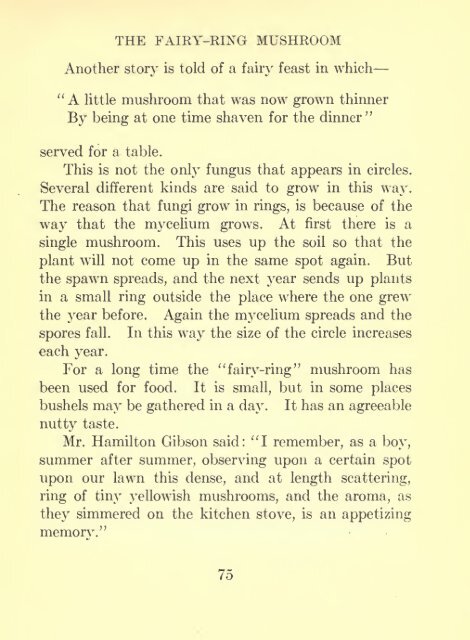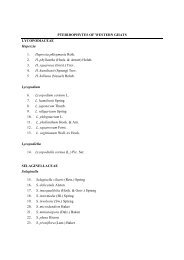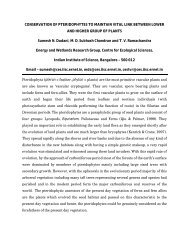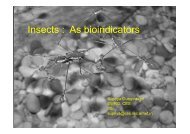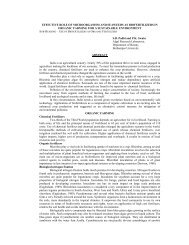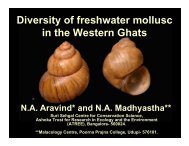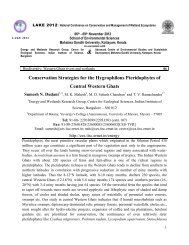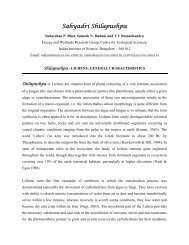Flowerless plants; ferns, mushrooms, mosses, lichens, and seaweeds
Flowerless plants; ferns, mushrooms, mosses, lichens, and seaweeds
Flowerless plants; ferns, mushrooms, mosses, lichens, and seaweeds
You also want an ePaper? Increase the reach of your titles
YUMPU automatically turns print PDFs into web optimized ePapers that Google loves.
THE FAIRY-RING MUSHROOM<br />
Another story is told of a fairy feast in which<br />
" A little mushroom that was now grown thinner<br />
By being at one time shaven for the dinner "<br />
served for a table.<br />
This is not the only fungus that appears in circles.<br />
Several different kinds are said to grow in this way.<br />
The reason that fungi grow in rings, is because of the<br />
way that the mycelium grows. At first there is a<br />
single mushroom. This uses up the soil so that the<br />
plant will not come up in the same spot again. But<br />
the spawn spreads, <strong>and</strong> the next year sends up <strong>plants</strong><br />
in a small ring outside the place where the one grew<br />
the year before. Again the mycelium spreads <strong>and</strong> the<br />
spores fall.<br />
each year.<br />
In this way the size of the circle increases<br />
For a long time the "fairy-ring" mushroom has<br />
been used for food. It is small, but in some places<br />
bushels may be gathered in a day. It has an agreeable<br />
nutty taste.<br />
Mr. Hamilton Gibson said: "I remember, as a boy,<br />
summer after summer, observing upon a certain spot<br />
upon our lawn this dense, <strong>and</strong> at length scattering,<br />
ring of tiny yellowish <strong>mushrooms</strong>, <strong>and</strong> the aroma, as<br />
they simmered on the kitchen stove, is an appetizing<br />
memorv."<br />
75<br />
—


